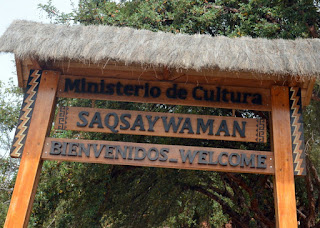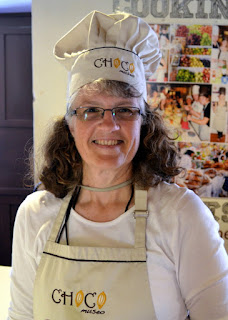Day 5 Amazing Shore Wildlife Cruise
Today we arrived at Floriana, an island that is also known as Charles, and Santa Maria. Alan's phone hasn't changed times yet, so he managed to get up an hour early. However, that provided an opportunity for a pretty good sunrise and a chance to get acclimated a bit more.
We started the day together at breakfast with the same table mates as last night. There was a nice buffet with lots of choices for a small boat. We enjoyed sharing humor and blending our experiences from some diverse places.
We had a safety briefing and instruction about how to get and use the snorkeling equipment. We will each have a set that we can use throughout the trip.
After getting our things together, we gathered in the lounge we went in groups into zodiacs for a our trip out to see the wildlife on the shores and outcroppings of Floriana. Dennis, the head nature interpreter was our guide and Darwin was our driver. We are learning that most of the staff and interpreters are Galapagos natives.
What happened next is almost unrelatable. Of course we will try. It won't mean much until we can get some of our pictures and movies up, but once we reached the reef, the animals were almost laying on top of each other, vying for our attention.
Galápagos sea lions
Galápagos penguins
Blue-footed boobies
Marine iguanas
Crabs
Green sea turtles
Frigates
American oyster
Blue herons
We started the day together at breakfast with the same table mates as last night. There was a nice buffet with lots of choices for a small boat. We enjoyed sharing humor and blending our experiences from some diverse places.
We had a safety briefing and instruction about how to get and use the snorkeling equipment. We will each have a set that we can use throughout the trip.
After getting our things together, we gathered in the lounge we went in groups into zodiacs for a our trip out to see the wildlife on the shores and outcroppings of Floriana. Dennis, the head nature interpreter was our guide and Darwin was our driver. We are learning that most of the staff and interpreters are Galapagos natives.
What happened next is almost unrelatable. Of course we will try. It won't mean much until we can get some of our pictures and movies up, but once we reached the reef, the animals were almost laying on top of each other, vying for our attention.
Galápagos sea lions
Galápagos penguins
Blue-footed boobies
Marine iguanas
Crabs
Green sea turtles
Frigates
American oyster
Blue herons
We eventually got out of the pangas when we got to a place called Post Office Bay. We had been told about this place earlier and we both got post cards ready to hopefully be delivered to us some day. There is a barrel on the shore there where people through the years have been depositing post cards. When someone visits the 'post office', they take away post cards from people who live near them and then deliver them when they return home. We delivered our postcards and then took one from Fort Wayne and another one from Fishers. It will be fun to see ours are ever delivered to us!
By this time, it was beginning to rain. The next activity was to be snorkeling in the shallow bay. The rain came harder and harder, and it appeared that the shallow snorkeling was still going to be in a decent current and in water that would be deeper than either of us were comfortable getting into. Knowing that we had a glass-bottomed boat trip coming up, we both elected to pass on the snorkeling, even though we had our equipment with us.
We took the panga back to the boat and quickly got out of our wet clothes and tried to find a way to get them dry. We relaxed on the top deck under the awning until lunch, when we shared our various adventures with our table mates.
After lunch we came back to the cabin for a siesta. Joyce could get used to this South American custom! While we relaxed the ship’s crew moved the ship to our afternoon location. This afternoon we had two choices for activities - Deep water snorkeling or a ride in a glass-bottomed boat. Since neither Alan or Joyce swim, the glass-bottomed boat was the choice for them.
We left the ship in the Zodiac, or panga as the naturalists refer to it. Since we have now made the transition from the ship’s metal stairs to the rubber craft several times, Joyce is beginning to get the hang of it.
We rode the panga to the glass-bottomed boat sitting in the water near a volcanic outcropping of rock. We transferred from the panga to the boat after instructions from our guide. The guides are very good at explaining what we will do and assisting each step of the way. The boat had a bench on each side the length of the boat with three large clear panels on the bottom of the boat. Six or seven people could sit on each side and there was a canvas covering for protection from the sun.
The boat driver slowly maneuvered the boat around the rocks, often getting quite close. The naturalist at one end of the boat and the driver at the other end pointed out the various fish we were seeing. To start our ride we had a curious sea lion checking our the clear panels from underneath. We saw many kinds of fish, spiny sea urchins, coral etc. The coloring and striping on the fish was quite varied.
Several of us put our iPhones on the class and took movies as the boat traveled. When the boat traveled to one side of the rock outcropping, the number and variety of the fish increased greatly and so did the strength of the waves. The boat rocked quite a bit. Joyce got a little sea sick, even with taking Dramamine, but was able to manage it by raising her head, closing her eyes and taking deep breaths. When the feeling subsided, she went back to looking at the fish.
We are very impressed with the skill of the boat drivers as they are able to maneuver the pandas near rocks and the sharp barnacles so both sides of the boat can see the various animals, point out interesting animals and fish, in a smooth manner that keeps us all engaged but also safe. Joyce, who loves the ocean but in the past has been fearful of small boats, felt very comfortable.
Our glass bottomed boat ride lasted 30-45 minutes as another group of people needed a turn. We transferred back to the panga and rode past the area were the deep water snorkeling was taking place. We picked up one of the men who had been stung by a jellyfish while snorkeling to take him back to the ship.
The ships crew often has snacks ready for us when we return from and activity, so we take the time to enjoy the snacks, often cheese, vegetables and a pastry of some sort like empanadas. When the snorkelers returned, the captain re-positioned the ship in preparation for our next activity. Meanwhile we had a chance for a little break (nap).
After the break, we began our third activity. We made a wet landing on a beach on the island of Floriana. Our walk was going to be short and on a sand/dirt path so we walked in our water shoes. Our first stop was to see flamingos in a brackish lagoon, which was evident by the smell before we reached the lagoon. The lagoon is a mixture of fresh and salt water. Our first look at the flamingos was overlooking the lagoon. We learned the flamingos have the ability to filter the water for food similar to the way whales use their baleen. We also learned young flamingos are white and are fed a type of milk that the mothers make from plants, though of course they are birds, not mammals.
We continued our walk to another beach up and over a small hill with small trees and large bushes. The sun was beginning to set so the light was beautiful off the sand, the bigger hills around us and the trees. The second beach was a nesting area for sea turtles. We saw the tracks the mother turtles made on their way up the beach. We didn’t see any turtles and it wasn’t yet time for the baby turtles to hatch, but the time was close. Baby sea turtles hatch and then walk to the ocean, but about 70% of them don’t make it as they are the preferred food for herons and frigates. We saw both herons on the beach and frigates circling in wait of a tasty meal.
As the sun set the beach became more beautiful in the golden light. Our naturalist guides take pictures during each activity, so Christopher took shots of couples and groups. The sand was very fine, white and beautiful. Christopher said we had the parrot fish to thank for the beach, since they eat tiny organism on the coral and the white sand is parrot fish poop.
We walked back the way we came, then turned and walked through a mangrove, a thicket of trees that grow in salt water for a closer look an a different group of flamingos. There were also a pair of duck that were filter feeding.
By the time we walked back to the first beach, the sun had set and it was growing dark. The pangas didn’t arrive right away and our group became a feast for the descending swarms of mosquitoes as we waited for the boats to arrive. Several of the group were evidently sweeter than Alan and Joyce as we weren’t bothered by the mosquitoes right away. Soon Joyce noticed 5-10 of them flying around and landing on Alan’s hat, so we broke out the spray we had brought with us.
The boats finally arrived and we began to board. As Joyce started to climb in the boat, it shifted in the waves and she slipped, soaking her shorts and the bottom of her shirt. She caught herself and was not hurt at all, just wet and feeling ungraceful.
When we returned to the boat, the next activity was a lecture about the various species of fish found in the Galápagos, and particularly in the south east islands where we were located. Christopher gave the lecture, and though we were tired, the information about the fish kept us awake and engaged.
As we were finishing dinner, Dennis, the program manager, came to our table and told us there were Galapagos sharks swimming near the back of the ship. As the sun goes down and the moon rises, the light reflects in the water and the fish swim to the surface, with the sharks following. The crew put lights on the water and we could see the shark's white bodies swimming just below the surface. The sharks were about 6 feet long and there were close to a dozen swimming near the back of the ship.



Comments
Post a Comment